HALLIE EPHRON: Today I am thrilled to host Tim Maleeny. The tag line for his latest Cape Weathers mystery, HANGING THE DEVIL, irresistible:
It was supposed to be a simple job: steal the paintings, leave the forgeries.
Tim's mystery novels are always intricate, fascinating, and alternately heartpounding and funny. This new entry in the series is somethig more - it's deeply steeped in art.
Welcome, Tim!
TIM MALEENY: Hallie, big thanks to you and all the Reds for letting me join for the day!
Before I start talking about writing, research, and art, I have to mention that I’ve been trying to declutter lately—not my strong suit—and at my wife’s insistence finally tackled the daunting task of emptying an old storage unit.
As you’d imagine, Careful What You Wish For keeps popping into my head, that’s such a terrific book! Fortunately none of the dark corners of our storage unit or the bins bulging with books and papers have revealed any dark secrets or put me in peril...yet.
HALLIE: This is starting to sound all too famliar...
TIM: However, one thing I did discover is a stack of posters and prints that once decorated an old apartment of mine, which brings me to the topics of today’s post: research and art history. These are subjects in which I had a rough working knowledge when I began writing my latest novel, Hanging The Devil, but my research revealed I had so much more to learn.
The book opens with a daring heist at The Asian Art Museum in San Francisco that goes horribly wrong when a helicopter crashes through the skylight, a robbery ending in tragedy that sets off a series of events connected to a global ring of smugglers, master forgers, and organized crime.
The story is loosely based on actual crimes, so I had to get my facts straight, which meant visiting museums, studying catalogues, and learning how to paint a convincing forgery.
I don’t know about you, but I tend to get lost in the research for my novels, maybe because writers love learning, or perhaps because the one thing I’ve truly mastered is procrastination. Either way, this story needed characters who came across as credible experts, which meant I had to travel down the rabbit hole as far as I could go.
What I discovered over the course of my research is that the stories behind the art were, by far, the most fascinating part of the puzzle.
Most of the paintings and sculptures I admired when I was younger were captivating for the skill of the artist, and while that’s still the case, my investigations led to a genuine fascination with how art gets made.
Researching the materials used to make paints in prior centuries—something any good forger must know—demonstrates how incredibly important art is to the human psyche. Whether writing, painting, sculpting or composing, telling a story in words, pictures, marble or song isn’t easy, and it used to be much, much harder than it is today.
When it comes to painting, certain pigments weren’t readily available, which limits your color palette. Imagine being asked to write a novel but only with certain letters or words? The chemistry behind the materials used to perfect paints that would hold over time was practically alchemy, trial and error involving everything from tree sap, dead insects, pulverized gems, and animal urine. (Yes, you read that last one correctly; it’s better not to ask.)
Not to mention the lack of indoor plumbing or electric lighting a modern artist’s studio might be expected to provide. It’s hard enough to paint in full daylight, let alone by candlelight with no central heating while your subject is scratching the head lice away.
When you hear the stories behind the art—the themes represented and the politics of the day—you start to appreciate why these efforts at self-expression served a great purpose, an outlet for people to find their voice and society to see itself from a fresh perspective. And then, when you learn what it took to physically make the masterpieces we’ve all seen and admired, it gives a new appreciation for why art matters, and why our own visceral response to a story, painting, or any work of art, is an emotional echo of something much bigger than ourselves.
As for mixing my own paints and becoming a master forger, I’ve decided to stick with writing. The tree sap is impossible to wash off, the dead insects are gross, and the rest of it...well, I prefer to play with words.
###
TIM MALEENY is the multiple award-winning author of the Cape Weathers mysteries and the bestselling comedic thriller JUMP. His latest caper is Hanging The Devil, named the Mystery Pick of the Month by Library Journal in a starred review for its “relentlessly fast-paced plot and dry humor.” A former resident of San Francisco, Tim currently lives and writes in New York City.
HALLIE: And lucky for us that Tim has decided to stick with writing. What we do for our "art"! I want to know how he knows what handling dead insects is like... Tim will be dropping by today so if you want to know more about art forgery, fire away!










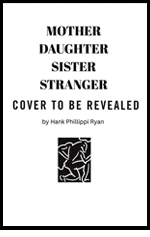
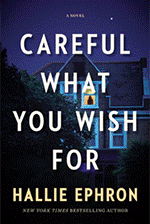
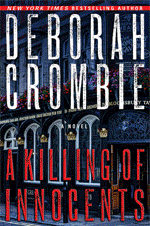
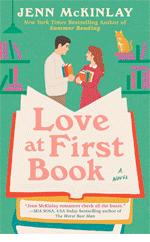
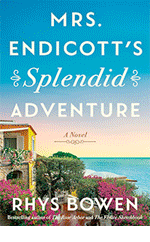

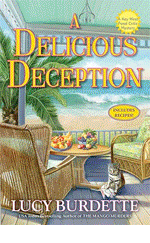
Congratulations, Tim, on your newest book . . . it sounds fascinating, and I'm looking forward to reading it. I understand why it would be important for the forger to get the materials right, but once you've got the tree sap/dead insect paints and [presumably] the correct canvas, it does seem as if it would be incredibly difficult to copy an art masterpiece well enough to avoid detection . . . so, if you are stealing the paintings and leaving the forgeries, how does that work?
ReplyDeleteJoan, thanks for the question, it was fascinating to learn more about the master forgers and how they work. There are several great books on the subject and there's a terrific documentary called "A Master Forger" about a forger named Guy Ribes who was one of the most versatile and prolific forgers of the twentieth century, he could mimic any of the masters. They believe scores of his paintings are still in catalogues, galleries and museums, authenticated as original art.
DeleteThe more I've read about art forgery the more I wonder how they know ANY of it out there is for real.
DeleteHoo boy, I know all about that research rabbit hole, Tim! Congrats on the new book, which sounds fabulous. I've read a few novels set in the past with artists making their own paints - SO much work. And beyond the dead insects (and so on), toxic ingredients. Wasn't it arsenic that used to be in green paints and dyes?
ReplyDeleteEdith, thank you, and yes, it was hard to get back behind the keyboard because learning about art was so fascinating! And yes, toxic materials were used, sometimes before they realized they were poisonous, as well as minerals and berries, anything they thought could create a richer pigment. When you think about what times were like in those days and the trouble artists went to just to get their materials it gives you a new appreciation for art in general!
DeleteTIM: I am always so happy to read a new Cape Weathers book!! I miss Cape, Sally and your Grace and I love virtually visiting San Francisco & learning more about art forgery in HANGING THE DEVIL.
ReplyDeleteP.S. How do you come up with the book titles ? Each one is a bit unexpected and memorable!
Grace, so nice to see you here! This was a tricky plot but I'm thrilled with how it turned out, and capturing the feeling of San Francisco these days took a lot of research. Hopefully you'll like where I've taken the characters, you'll have to let me know. The titles are little puzzles, an oblique reference to something or someone in the book, sometimes combined with a colloquial expression or idiom from another culture. I must generate forty or fifty titles before picking one that feels like it'll stick.
DeleteWow, 40-50 possible titles is a lot, but you've nailed them. BEATING THE BABUSHKA and BOXING THE OCTOPUS are 2 of my faves.
DeleteHaha, mine too. When we cross paths I'll tell you a funny story about how one of the titles almost changed at the last minute.
DeleteI agree! Tim's titles are brilliant. Theye're all "verbING the noun" but the unexpected combinations are what make them work.
DeleteHats off to you, Tim, for all the research that has gone into HANGING THE DEVIL. I've read that forgery is a complicated science as well as an art. Sounds fascinating.
ReplyDeleteThank you, Kim, it is a fascinating and previously unknown world, and the more I learned, the bigger my story became, so I went from writing about a local museum heist to crafting an international thriller where the shadowy world of organized crime has turned its attention to art theft and forgery.
DeleteTim, dare I say it? You are a new-to-me author and your new book sounds fascinating. Is it part off the series? If so, then I am off to find book #1, although JUMP also sounds perfect. I love humor!
ReplyDeleteThere are days when I go down rabbit holes just figuring out what to read next.
Judy, thanks for the kind words! Because my books span a broad period of time they are written as standalones, even though there are recurring characters, so you can jump in at any point. Each one tackles a slightly different world (in this case, the illicit art market) and cultural collision in the criminal underworld. They've been called 'comedic thrillers,' which is a pretty good description of the fast pacing and irreverent tone, but you'll have to tell me what you think!
Delete"Comedic thrillers" - perfect description.
DeleteAgreed: "rabbit holes" is just another term for 'research', the challenge being that that next site or book or interview might hold the PERFECT answer so it must be investigated!
ReplyDeleteWould it be impolite to say that your essay and book -- the tone, the humour, the pacing -- put me in mind of The Thomas Crown Affair, a favourite movie of mine (the Renee Zellweiger/Pierce Brosnan version)?
I'm off to discover your writing -- and to try to get that image out of my mind about the artist, the subject, and the head lice!!!
Amanda, thank you for the comment, and let me say I love that film! My books always have a nod to popular culture, and when I saw the skylight at the Asian Art Museum in San Francisco I knew I needed a helicopter, but as we know from the film, helicopter heists rarely go the way the thieves want them to. A big part of the fun of the research was learning how successful museum heists—and there are many—had been pulled off, so I could make sure and get it right. Hope you enjoy how it turned out!
DeleteHeists! Here in Boston the one at the Isabella Stewart Gardner Museum is legendary. I don't think any of those works were recovered and that heist has inspired so many books.
DeleteHallie, that still stands as one of the biggest and most infamous heists in history, the art is still missing, as you said, and so many theories as to where it went!
DeleteTim, I'm another new-to-you reader, and I'll be looking for book #1 in your Cape Weathers series. I don't always read a series in order--especially when I've just discovered it through a new release. If this essay is any indication, I'm going to be a happy reader! Congratulations!
ReplyDeleteFlora, thank you! The good news is that the books are written as standalones and take place over a broad period of time, so dive in anywhere depending on which setting or subject interests you most. The first novel to feature these characters is Stealing The Dragon, which takes place in San Francisco and Hong Kong. Let me know what you think, and thanks again!
DeleteTim, congratulations on the new book. I must sheepishly admit that most of my "knowledge" about art forgery comes from watching "White Collar." In addition to the paints, don't forgers have to be mindful of what types of canvas would have been used by the original artist? I'm sure what I can buy in a modern art supply store is not the same as the 1500s.
ReplyDeleteLiz, you're exactly right, the materials on which the paints are applied matter just as much, the canvas or linen on which the original paintings were made. Aging those materials so they appear older than they are is a fascinating sort of reverse archaeology, and the frames, even the nails, have to be faked in case anyone looks too closely.
DeleteI wonder if there are people who deal in just the raw matrials for diffrent period fakes. Hmmm...
DeleteTim - congrats on your new book. I really look forward to reading it. I am interested in art history and art heist and forgery. I read an autobiography by Tony Tetro about his life as an art forger. He was eventually caught when one of his forgeries was wrongly displayed in an art gallery in LA and the actual artist became suspicious. The District Attorney in LA later described Tony as one of the two best forgers in the US. His masterpiece works were near perfection and hung in museums and art galleries worldwide. Even Prince Charles had his works thinking they were original.
ReplyDeleteThanks for the comment! That's a fascinating case, and I wouldn't recommend forging paintings of anyone who's still alive and painting, that definitely raises the chances of getting caught. And as you say, experts believe quite a few paintings currently on auction or hanging in museum are actually forgeries. Fascinating topic and a great backdrop for a mystery!
DeleteGood point about forging a living artists work! LOL. Tetro also built a Ferrari (another forgery?) and drove around in it.
DeleteI'm fascinated by the artists who are good enough to forge famous paintings, but who don't do their own work. That seems so sad to me.
ReplyDeleteSpeaking of dead insects, on a bus ride in Peru our guide had the driver pull over so he could pluck a nondescript white bug off a leaf (how he spotted this I have no idea). He brought it inside the bus, put it in a tissue and crushed it. The white became a brilliant carmine! It was astonishing. Cochineal bug, which has been used for centuries to color everything from dyes to food.
I've done a little forgery, back in my mid-20s, but it was for signatures. I worked for a big-deal life insurance agent whose clients were way too important and busy (sarcasm) to bother with signing their own applications. Once the boss found out I could convincingly copy signatures that became part of my job--with the clients' approval, of course. I can't do it now, though.
REALLY?!?!? Wow. Now there's a terrific premise for a mystery....
DeleteYes, it was probably wildly illegal, too. I feel fairly safe admitting it now. The agent died several years ago, and most of his wealthy clients were much older than he. I'm not even sure the company still exists, either.
DeleteI agree, Hallie, that's definitely a strand in a bigger mystery just waiting to be written!
DeleteWow Karen ... and no one was ever the wiser? Was there money lost by the clients because of the forgery? It was probably on the up and up as eventually someone would have wondered why they just "signed" over their life insurance policy to your boss. Anyway a strange story! But a good book in the making!!
Deletethat does sound fascinating, Karen. And could make a great mystery plot--I can see it combined with a tontine scheme. - Melanie
DeleteI love art theft and forgery books! Adding yours to my stack of books for the winter ahead.
ReplyDeleteThank you, Margaret, shoot me a note at tim@timmaleeny.com and let me know what you think! I learned so much about art crime it's tempting to write another book dealing with that world.
DeleteThere's a fascinating documentary on Netflix called MADE YOU LOOK about the sales of forged modern masters.
ReplyDeleteOh I haven't seen that one, Ill have to check it out, thanks Hallie! (Might be good fodder for the next book.)
DeleteCongrats on the new book!
ReplyDeleteThanks Mark, really appreciate it!
DeleteTim, I'm up for a comedic thriller anytime! I can hardly wait to check this one out.
ReplyDeleteThanks, Pat, let me know what you think, it was a fun book to write!
DeleteHi Tim, waving at you!! I was fortunate enough to read Hanging the Devil pre-pub and I LOVED it! It's one of my favorite reads of 2023! Can you give everyone a little synopsis of the plot?
ReplyDeleteagree debs that would be nice to have. my library has Hanging the Devil on order (meaning they will stock it e.v.e.n.t.u.a.l.l.y) so I may buy a copy. Looking forward to reading it.
DeleteThanks, Deb, for all the support, your feedback means the world!
DeleteOkay, here's a quick synopsis for HANGING THE DEVIL from the jacket:
It was supposed to be a simple job: steal the paintings, leave the forgeries, but when a helicopter crashes through the skylight of the Asian Art Museum, an audacious heist turns into a tragedy. The only witness to the crash is eleven-year-old Grace, who watches in horror as a guard is murdered and a priceless statue is stolen by two men and a ghostly figure who sees Grace as nothing more than a loose end. Terrified, Grace flees into the night and seeks refuge in the back alleys of San Francisco's Chinatown.
Grace is found by Sally Mei, self-appointed guardian of Chinatown. While Sally trains Grace in basic survival skills, her erstwhile partner Cape Weathers, private detective and public nuisance, searches for the mysterious crew behind the robbery before they strike a second time. As the clock winds down, Cape seeks help from some unlikely allies and felonious friends to lay a trap for a ghost who has no intention of being caught—nor of leaving any witnesses alive.
Thanks, Tim! The heart of the book is Grace's story, and Grace and Sally's relationship. I loved it!
DeleteI found your post so interesting, Tim. Rarely have I stopped to think about the masters of old dealing with pigment problems and times of the day they could paint. There is one thing you failed to complete in your piece. I'm wanting to know what kind of prints and posters you found in your locker.
ReplyDeleteThanks, Kathy, and you're right, that is a loose end in my story. They were posters of illustrations by artists who did cover art for fantasy, science fiction and pulp novels I enjoyed when I was younger, some very surreal, others in a Pre-Raphaelite style for covers of the fantasy books, and some in a comic or pulp style reminiscent of the thirties adventure novels. It was fun to rediscover them and remember that feeling of being completely absorbed in a book and lost in another world.
DeleteI love art based mysteries, Tim. Always fascinating! Can't wait to read Hanging the Devil! Also, I am in the process of decluttering a storage unit - I feel your pain.
ReplyDeleteJenn, thanks for the comment, you'll have to let me know what you think of the story after you've finished. (Art mysteries are the best, aren't they?) As for storage, that's the real mystery, how I'll ever dig my way through that unit!
Delete